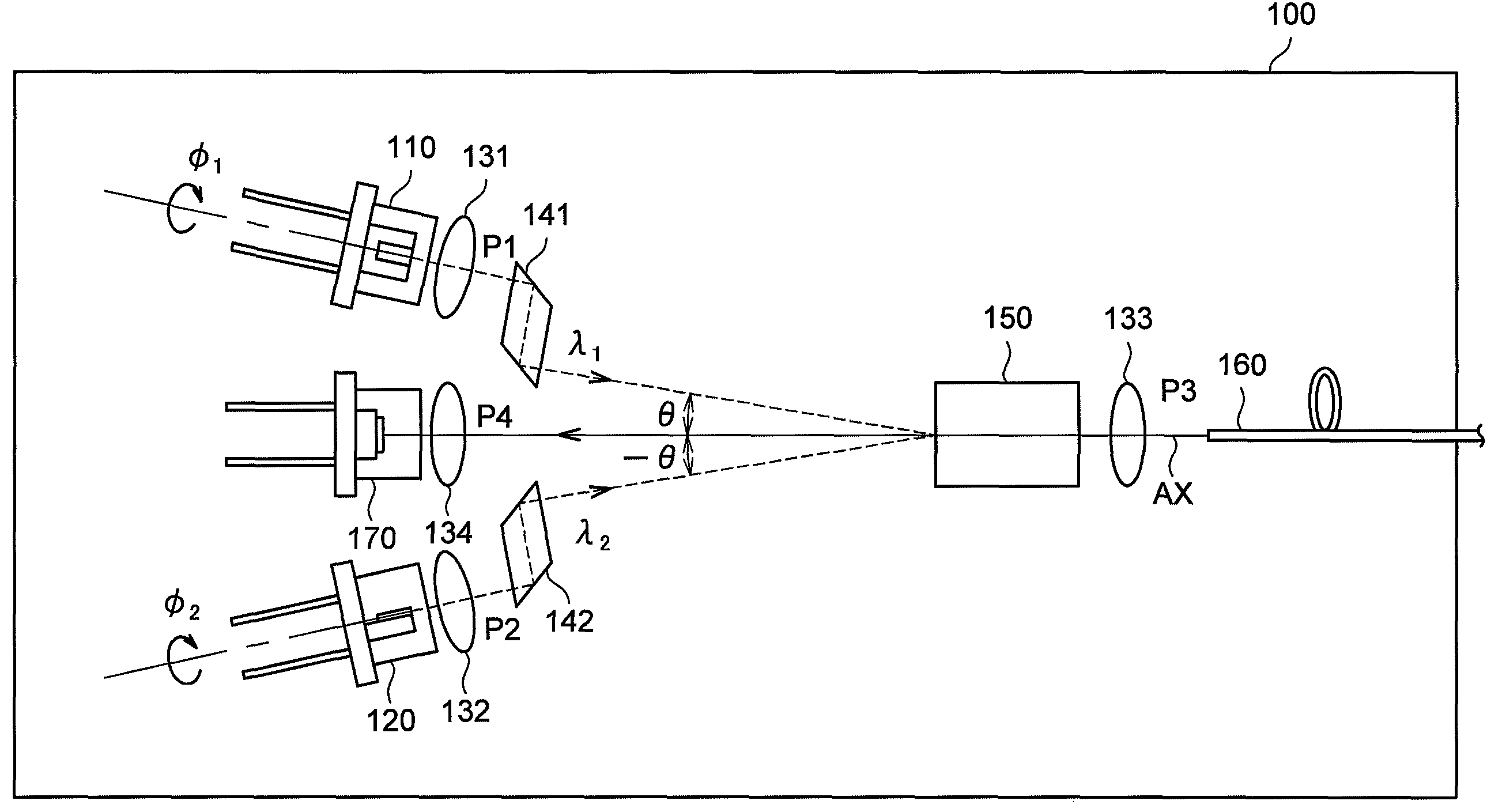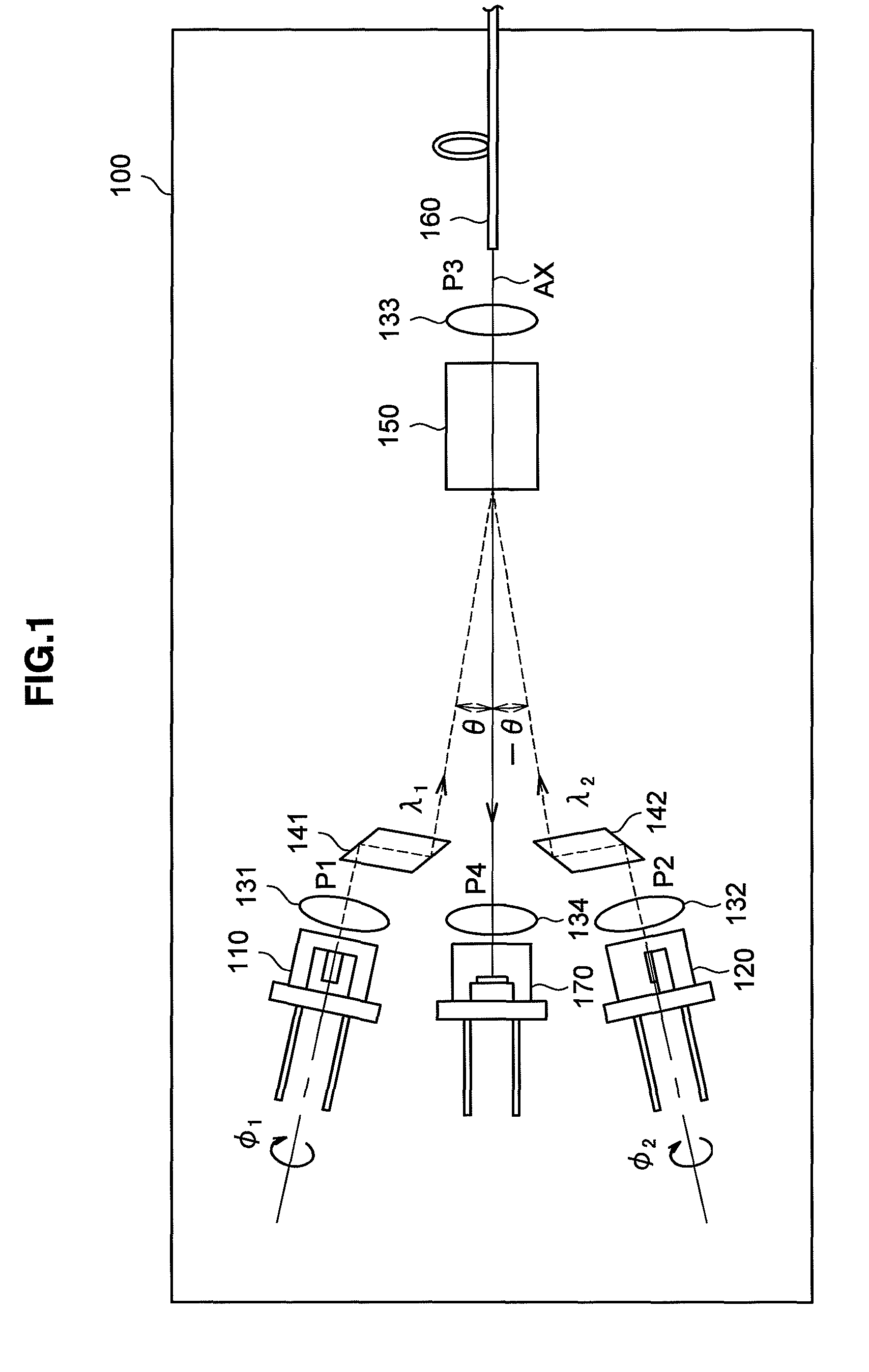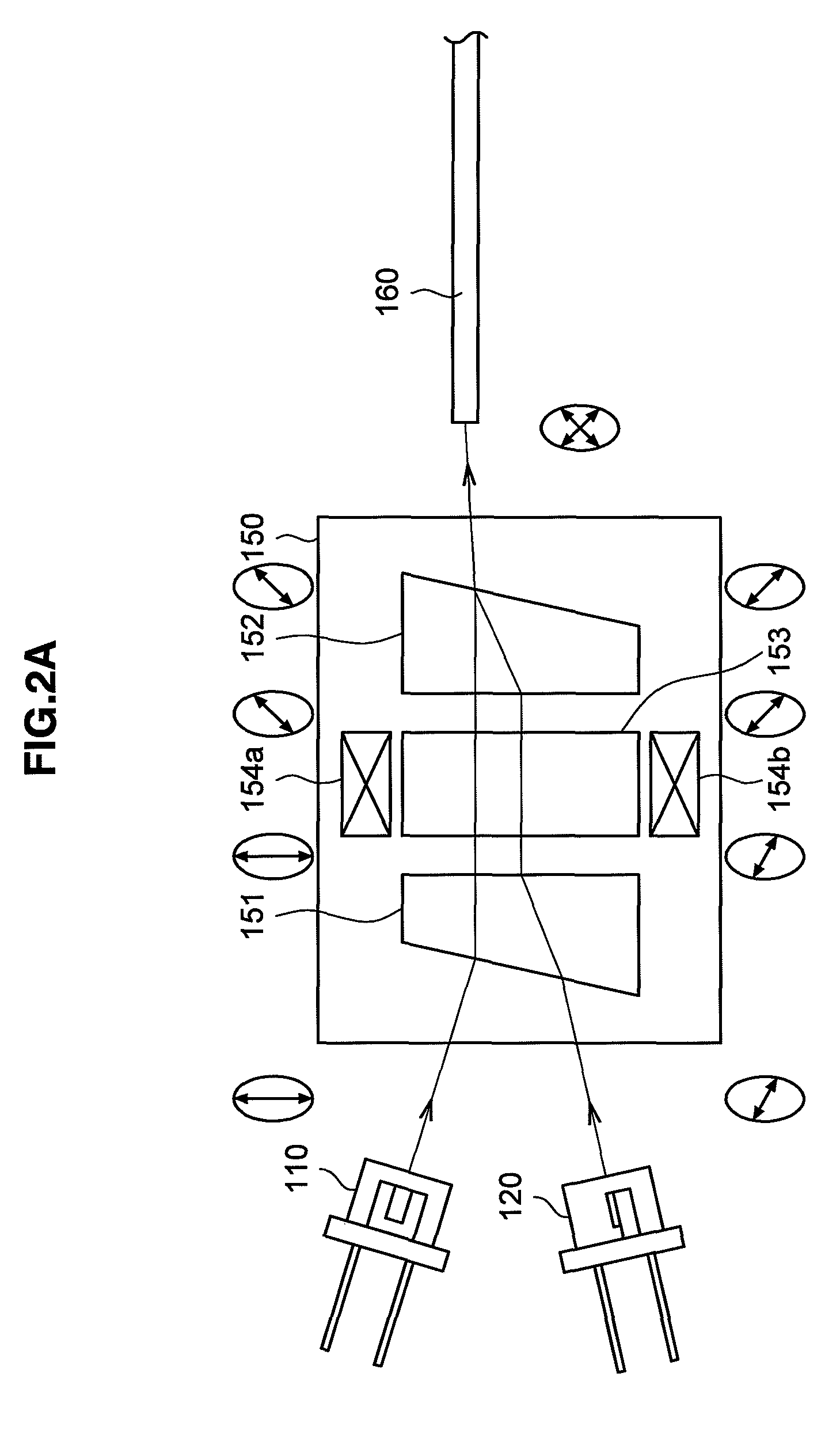Bidirectional optical module and optical time domain reflectometer
a bidirectional optical module and reflectometer technology, applied in the direction of optical elements, testing fibre optic/optical waveguide devices, instruments, etc., can solve the problems of increasing coupling losses, adverse effects on the bidirectional optical module, and increasing manufacturing costs, so as to achieve high sensitivity, high optical power, and the effect of miniaturization
- Summary
- Abstract
- Description
- Claims
- Application Information
AI Technical Summary
Benefits of technology
Problems solved by technology
Method used
Image
Examples
first embodiment
[0035]First, the configuration of a bidirectional optical module 100 according to the first embodiment of the present invention will be described based on FIG. 1. FIG. 1 is an explanatory diagram showing the configuration of the bidirectional optical module 100 according to the present embodiment.
[0036]The bidirectional optical module 100 according to the present embodiment includes, as shown in FIG. 1, light emitting elements 110 and 120 to emit light, lenses 131 and 132 to make light parallel, lenses 133 and 134 to condense light, refractive prisms 141 and 142, a non-reciprocal unit 150 to allow light to pass only in one direction, an optical fiber 160, and a light receiving element 170 to detect light. The bidirectional optical module 100 according to the present embodiment has the light emitting element 110 disposed in a first port P1, the light emitting element 120 disposed in a second port P2, the optical fiber 160 disposed in a third port P3, and the light receiving element 1...
second embodiment
[0059]Next, a bidirectional optical module 200 according to the second embodiment of the present embodiment will be described based on FIG. 3. FIG. 3 is an explanatory diagram showing the configuration of the bidirectional optical module 200 according to the present embodiment. The bidirectional optical module 200 according to the present embodiment is different, when compared with the first embodiment, in that the bidirectional optical module is provided for three wavelengths by adding a light emitting element 210. A difference from the first embodiment will mainly be described below and a detailed description of the same constitution and the same operation is omitted.
[0060]The bidirectional optical module 200 according to the present embodiment includes, as shown in FIG. 3, the light emitting elements 110, 120, and 210 to emit light, the lenses 131 and 132 and a lens 231 to make light parallel, the lenses 133 and 134 to condense light, a multiplexing / demultiplexing filter 240, the...
PUM
 Login to View More
Login to View More Abstract
Description
Claims
Application Information
 Login to View More
Login to View More - R&D
- Intellectual Property
- Life Sciences
- Materials
- Tech Scout
- Unparalleled Data Quality
- Higher Quality Content
- 60% Fewer Hallucinations
Browse by: Latest US Patents, China's latest patents, Technical Efficacy Thesaurus, Application Domain, Technology Topic, Popular Technical Reports.
© 2025 PatSnap. All rights reserved.Legal|Privacy policy|Modern Slavery Act Transparency Statement|Sitemap|About US| Contact US: help@patsnap.com



